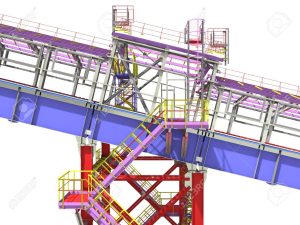Building Information Modeling
Building Information Modeling is a new way of architecture designing. Imagine a modern imaginary town in which all the buildings are designed digitally. The sketch is created by an architect or engineer on a digital tablet and then shared with the rest of the team. By viewing and collaborating on the design, all of the participants can work together to deliver a successful project. It helps to coordinate the various disciplines of the construction process and reduces rework and delays.
BIM is a comprehensive database that stores accurate structural information and other building systems. This includes information about plumbing fixtures, HVAC equipment, and electrical systems. It also has technical data about individual building materials. For example, a BIM object for a wall can display extended parameters such as strength, heat, and emissivity. It can even show electrical resistance. The model can be used to create construction plans and specifications. Its capabilities make it easier for construction professionals to communicate the project’s needs and ensure that every detail is included.
One of the main benefits of BIM modeling is that it helps design projects more efficiently and reduces costs. In addition to this, BIM models allow users to compare existing designs and compare them with the final product. The information provided in a building model can also identify flaws and improve them, making it easier for the team to communicate a project. The collaborative process between design teams and construction teams can eliminate mistakes and increase efficiency. There are many benefits to using BIM.

Benefits of Building Information Modeling
BIM also allows users to experience a project before construction begins. During preconstruction, everyone can experience the space. This can reduce construction changes and delays. The “database-first” modeling process also helps the project teams collaborate and edit building information with ease. It prevents inconsistencies and allows all parties to edit the model simultaneously. In addition, the building information is updated more frequently, so a BIM model is always more accurate.
The benefits of BIM are numerous. It allows all parties to view the project before it starts construction. Having this preconstruction experience can help to reduce costs and delays. Additionally, it can help improve workflows. By incorporating BIM into the construction process, project teams will be more productive. In addition to reducing costs, BIM can increase occupancy and use rates of a building. So, there are many advantages to BIM.
One of the greatest benefits of BIM is its ability to visualize a project before construction begins. By creating a BIM model, all parties can experience the space before it starts construction. This can help minimize changes to the construction schedule and reduce delays. Using a BIM model, all parties involved in the project can interact with it. It allows people to share information with each other. This is essential to any BIM process.